As the leaves begin to change and the air turns crisp, it's the perfect time to cozy up inside and create a warm and inviting atmosphere. This edition of Good to Be Home provides all the inspiration and information you need to do so with a guide to decorating with vintage finds, two pumpkin treat recipes, factors to consider when shopping for window dressings, and tips for protecting your home while you travel south.
Halloween is just around the corner, and what better way to celebrate than by incorporating antique treasures into your decor? The article inside delves into the world of secondhand shopping, offering tips on how to discover unique pieces that will add a touch of spooky sophistication to your spaces.
Pumpkins aren't just for carving—this year, celebrate the season's harvest with a delightful twist. This issue features a coupling of recipes for pumpkin bread rolls and a pumpkin cream cheese dip that promise to elevate any fall gathering.
Fall brings a change in light, and updating your window treatments is a simple yet impactful way to enhance your home's ambience. Inside, explore the key factors to consider, including light control, privacy, and style, to help you dress your windows to perfection.
Planning a winter escape? The enclosed article equips you with essential tips for shielding your home from the elements while you're enjoying your time away. Learn about preparing your plumbing, preventing drafts, ensuring overall security, and more so you can travel with greater peace of mind.
Here’s to creating a beautiful and comfortable haven as the seasons change. As always, it’s a pleasure to send you this magazine.
The arrival of October brings with it a special air of spookiness, thanks to its twisting, bare branches and longer nights. So why not embrace the haunting allure of the season by decorating your home for Halloween? But before you make a trip to a party store, consider visiting a flea market or antique shop in search of secondhand pieces that exude eerie elegance. With this approach, you can not only transform your home more sustainably but also give it a vintage charm that’s guaranteed to make your spaces extraordinary.
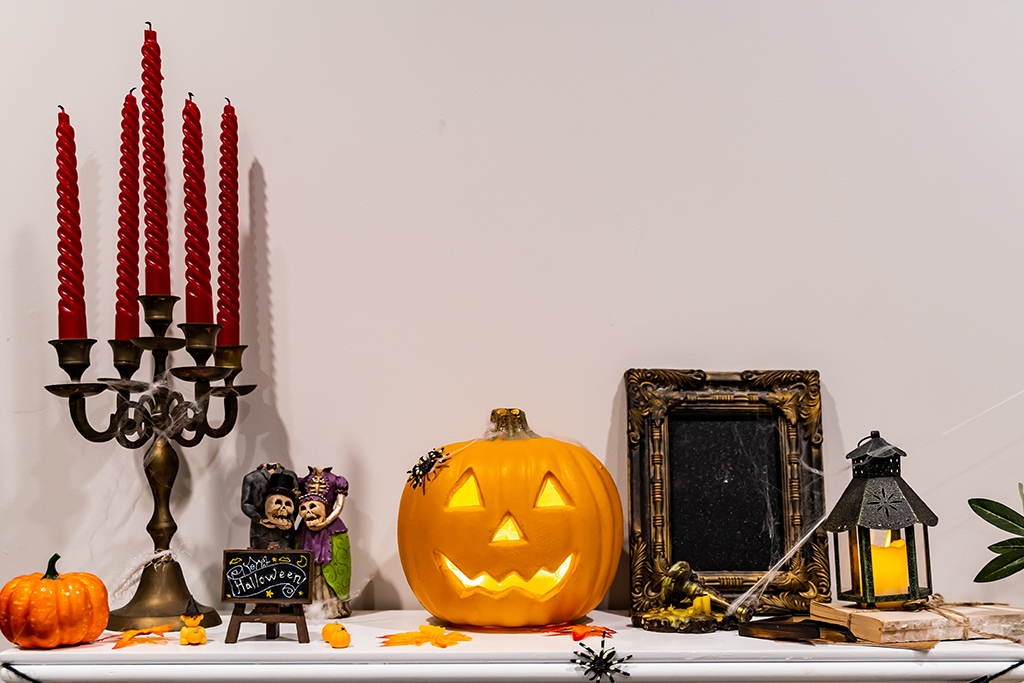
Whether you’re aiming for a Victorian aesthetic or embracing earth tones, you can easily cast a spell of enchantment over your home with the flickering glow of antique lanterns, candelabras, and candlesticks. These pieces are a great way to highlight an area, add height to your dining table or fireplace mantel, and, most importantly, set the vibe for the rest of your decor. For instance, you could set a tall, gold candelabra with multiple curved arms at the center of your mantel, then add other orange, red, and brown pieces around it for a whimsical effect. Real candles will lend the spookiest vibe with their dancing flames and casted shadows, but you can also invest in battery-powered or solar options that pose less of a hazard and can be used for years to come.
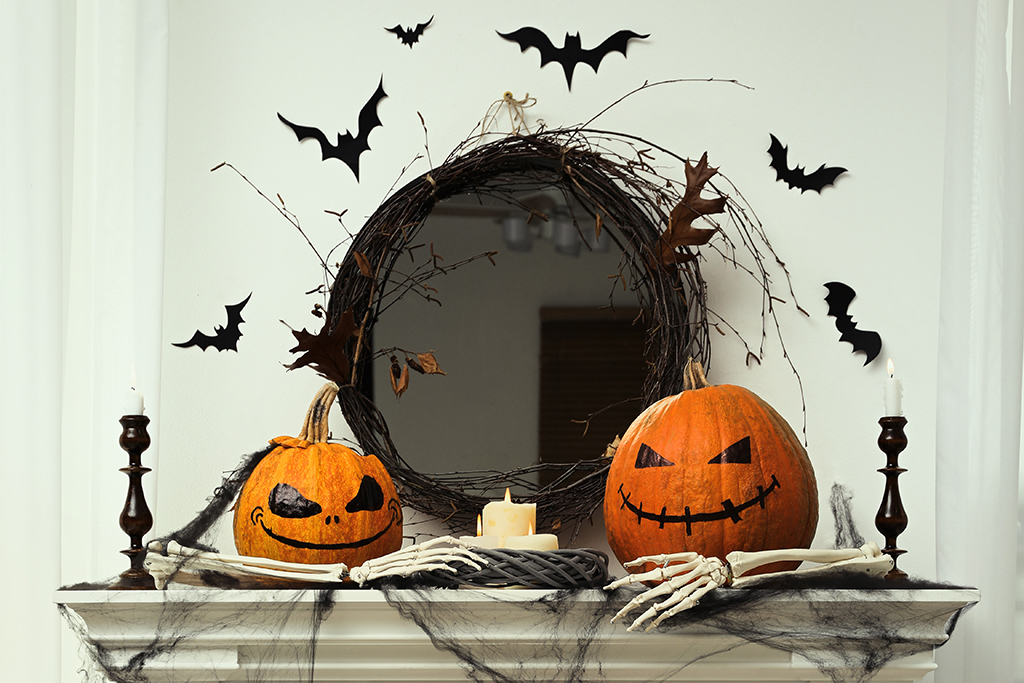
One of the most quintessential elements of any haunted house is vintage wall decor that appears to recount stories of bygone eras. Think weathered items that evoke a sense of mystery, such as an aged mirror with minor cracks in its frames or black spots in its corners or painted portraits of enigmatic figures whose eyes seem to follow your every move. Each can add intrigue to your entryway or hallway, especially when mixed with other decorations like cobwebs, bats, or hanging lights. As a bonus, these pieces are often easy to swap with ones you may leave up throughout the rest of the year, making this a quick and often budget-friendly way of transforming your living spaces.
Elevate your Halloween dining experience with antique tableware that adds a touch of gothic sophistication to your festivities. While strolling the aisles of your local flea market, look for vintage plates and bowls with dark floral patterns or other intricate designs that have an old-world elegance to them. You can then pair these pieces with etched goblets or crystal decanters along with silver cutlery that shows a hint of tarnish. Complete the overall look with a lace tablecloth or runner, and the result will be a dining room that exudes both refinement and mystery.
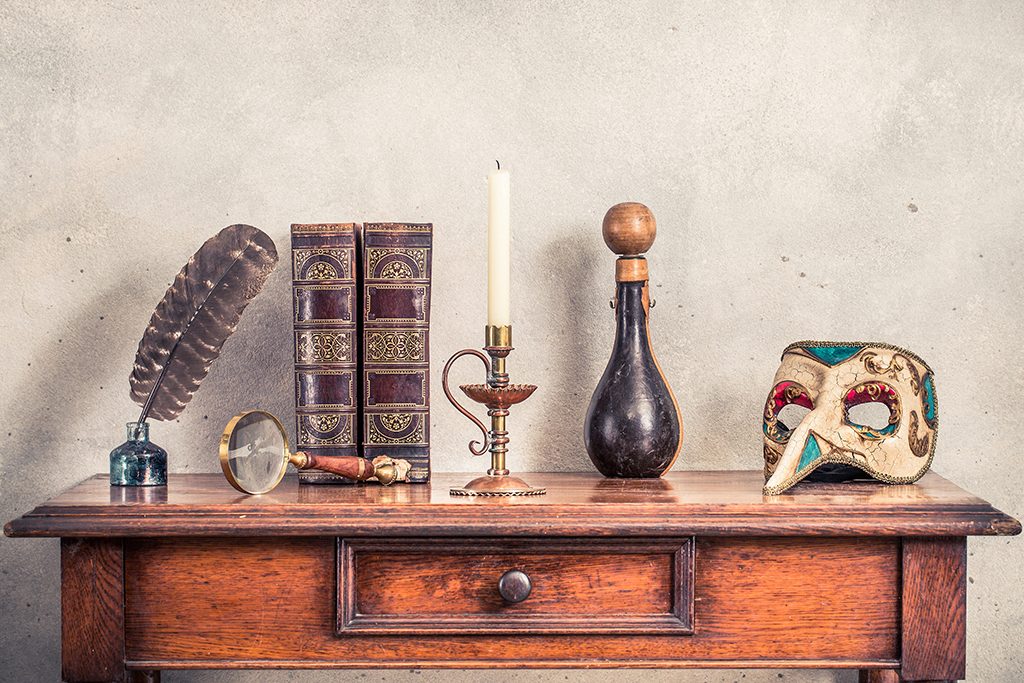
From antique dolls to old-timey medical instruments, antique shops and flea markets often house a wide variety of peculiar oddities that may provide an excellent finishing touch to your decor. Just picture it: sitting upon your entryway table could be a stack of worn medical books topped with broken eyeglasses and paired with an old jar you filled with a mysterious “potion.” Though seemingly random, these items together would create a unique, spooky story. So keep your eyes peeled and your mind open while browsing—as with any secondhand shopping, one person’s trash could be your decorative treasure.

If you’re unable to find the perfect piece, you can turn virtually any secondhand object, be it a landscape painting, ceramic bust, or picture frame, into something hauntingly beautiful. For instance, jazz up any basic pastoral painting by adding a ghost somewhere in the piece; get inspiration from designer Jennifer Rizzo’s example here. For another option that requires a bit more work, consider following this tutorial for transforming an antique frame into a creepy, glowing portrait.
Typewriters are another classic example of items that tell the tales of decades past, so if you find one in good condition, set it out on full display amid your other decor; you could even type a line from your favorite Edgar Allan Poe piece. Or if you can’t find an appropriately spooky mirror, grab any unique one and write a phrase from a horror film on it using a red whiteboard marker. With just a few secondhand items and a dash a creativity, you can make a one-of-a-kind piece to set your home apart from the rest.
In these months of crisp leaves, cool winds, and warm gatherings, there’s perhaps no better way to embrace the season than to savor ripe fall foods. So slip into your favorite cozy sweater, tie on your apron, and get ready to whip up these surprisingly simple recipes, each of which features a rich pumpkin flavor that will have you wishing for an endless autumn.
These delectable and adorable bread bites are the perfect pairing for a hearty meal.
Creamy and indulgent, this dessert dip will elevate any party snack table.
recipe by natalie lewicki
photos by shana smith
No fall feast is complete without pumpkin, and these delicious rolls are an unexpected way to add a touch of seasonal flavor to any meal. Serve them at your next Halloween gathering or seasonal soiree!
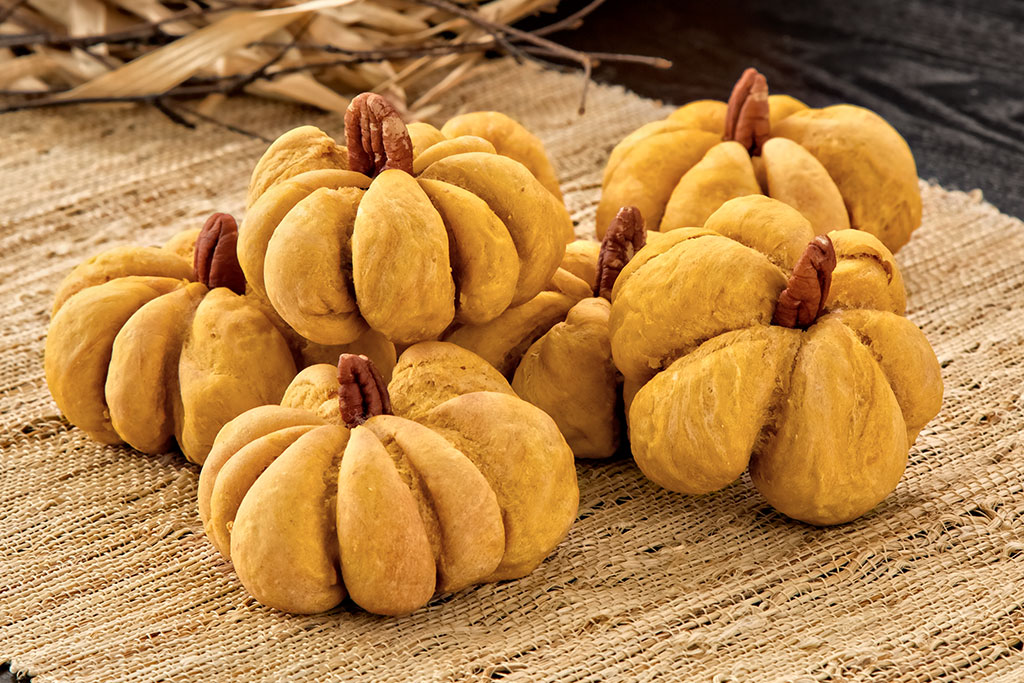
Serves 8

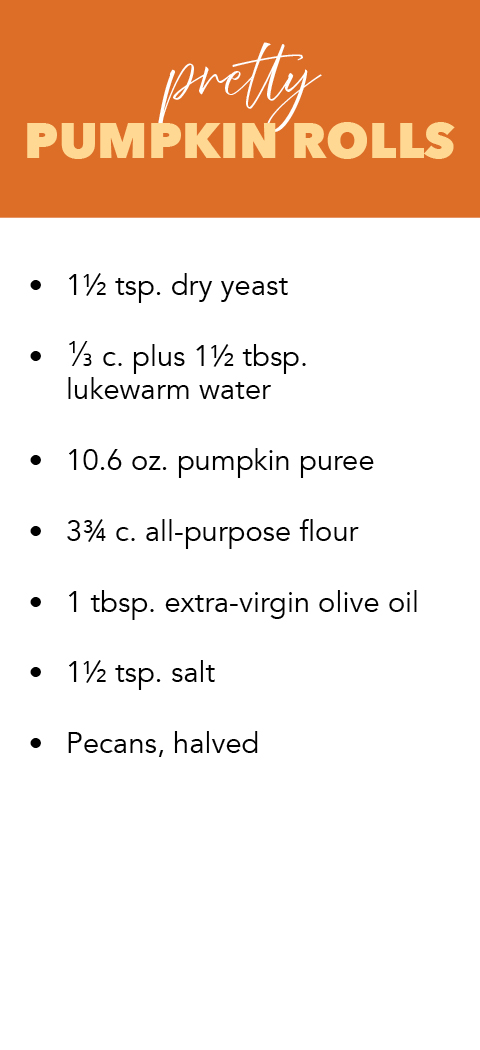
recipe by chelsea kirk
photos by shana smith
Pie is one of the most quintessential fall treats, but it isn’t the only way to get indulgent with pumpkin. If you want to spice up your dessert selections, whip up this simple dip to serve with your favorite cookie or chip.

Serves 8
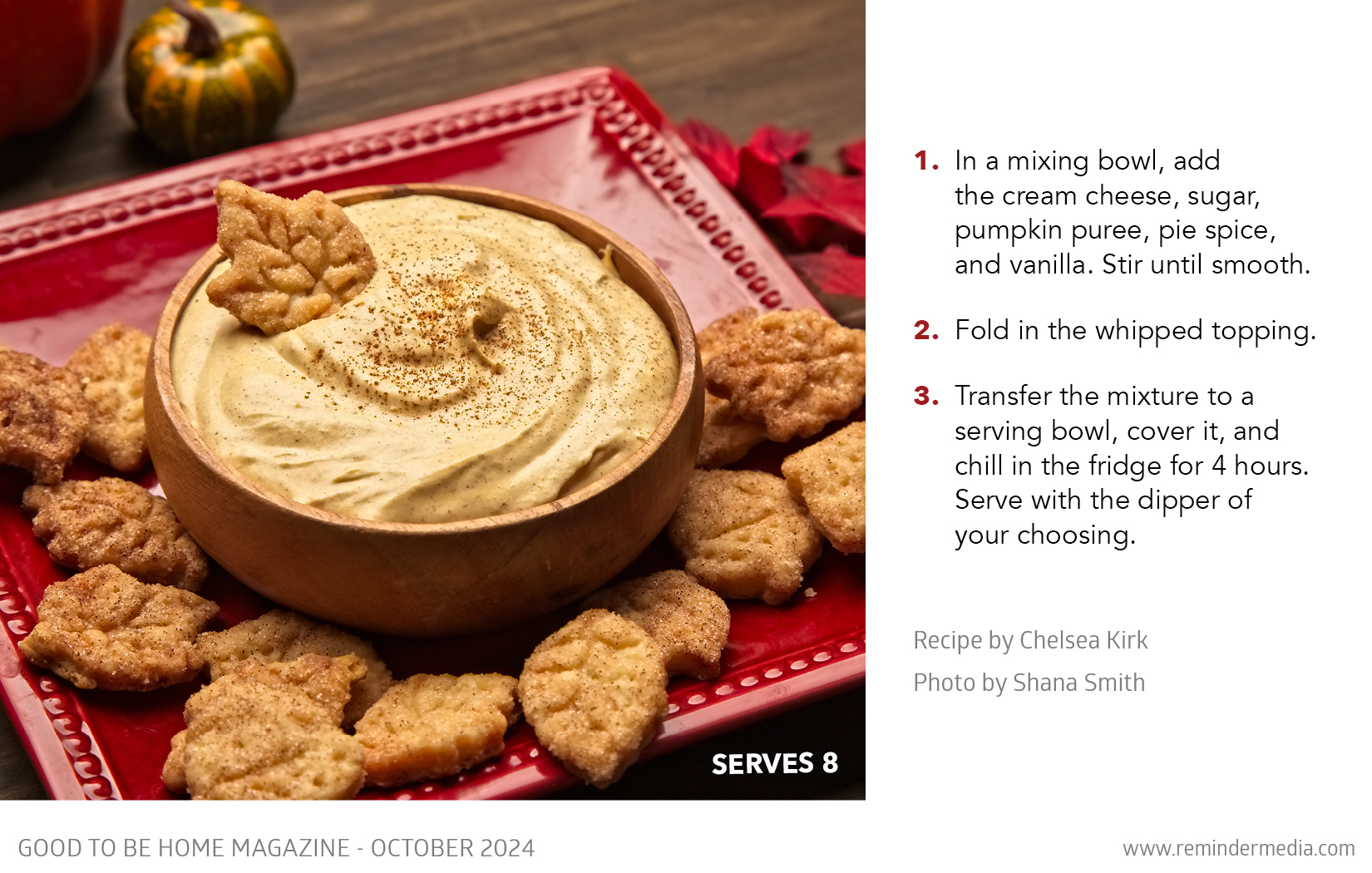
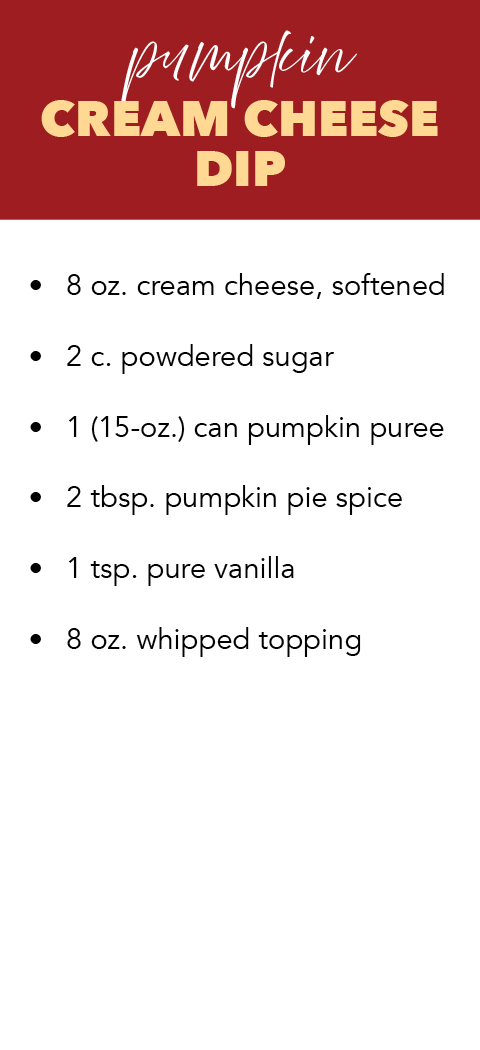
A home’s window treatments may serve multiple purposes—they can add ambience, filter or block daylight, and provide privacy. But with so many options to choose from, it can be difficult to determine which ones will meet your needs best. Peruse this guide on the various factors to consider when shopping for window coverings to ensure that you choose ones that look good and function well.

An excellent place to start is by deciding on the primary purpose of your window treatments. For instance, do you intend for them to be purely decorative, or is privacy or light control your concern? Identifying your goals will allow you to assess which features will help you achieve them, such as color or trim for style or treatment type for function. Then you can effectively narrow your search, cutting your options down from potentially thousands to a less overwhelming few hundred.

Depending on the room you’re outfitting, you may want to allow more or less natural light into the space—the material you choose for your window coverings will largely affect this. Sheer fabric curtains and some wood-slat blinds and linen shades can diffuse sunlight, creating a soft and cozy glow, while window films can reduce glare without completely blocking out the sun. On the other end of the spectrum, room-darkening and blackout treatments, such as shades with an acrylic- or vinyl-coated lining or curtains with a dense fabric liner, can block between 95 and 100 percent of outside light, making them ideal for a home media room or a bedroom. Another option is UV-blocking shades, which can protect your skin from the sun and keep out rays that can fade your furnishings.
Whichever direction you go in, make sure to measure the height and width of your windows carefully before ordering your coverings. After all, fit can play a huge role in their functionality—those blackout curtains, for example, won’t be quite as effective if they’re too short or narrow.

In rooms where you’d prefer more privacy, search for treatments that can thwart a wandering eye. For bathroom windows and ones that face a neighbor’s house, blinds and roller or honeycomb shades are a good choice. However, if you want both light and seclusion, such as in a bedroom, consider shades that can be adjusted from the top as well as the bottom to cover just a portion of your window. And if you have a picture window, a one-way film can provide a mirror-like effect so you can still take in the beautiful views without worrying about outsiders looking in.

According to Energy.gov, about 30 percent of a home’s heat can be lost through its windows during cooler months, while about 76 percent of the sunlight that shines through double-paned windows in warmer months can enter as heat. You can combat this with the strategic use of window coverings. Make it a habit to open them on chilly days and close them on warm ones—there are even curtains, drapes, and blinds that can be operated via a smart-home assistant. Better yet, choose cellular shades, which offer energy efficiency in all seasons because they trap heated or cooled air and prevent it from escaping through the window. You can also switch out your window dressings seasonally, choosing darker and heavier drapes for fall and winter to absorb heat and lighter-colored ones for spring and summer to reflect sunlight and make the room feel cooler.
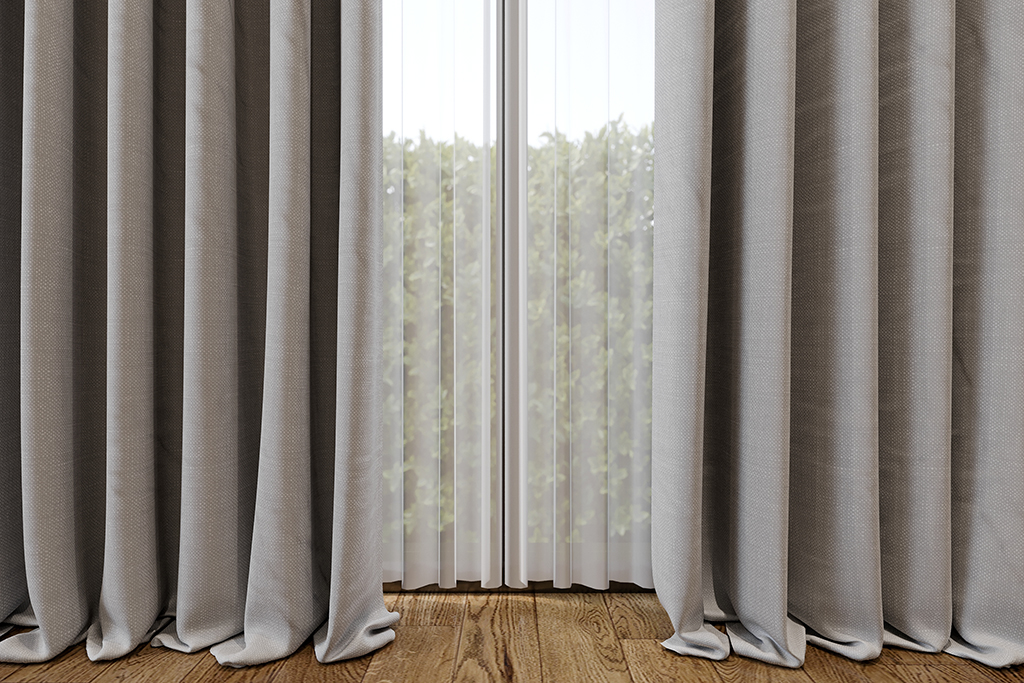
Though function may matter most when it comes to selecting window treatments, it’s just as essential to consider form to avoid selecting something that ends up clashing with your room’s design. Classic valances with silk, velvet, or linen drapes can lend a traditional look, neutral-toned roller shades a timeless effect, and bamboo blinds a down-to-earth aesthetic. Length can also be a huge factor when it comes to drapes. The general rule of thumb is to have them reach or pool on the floor, but if the windowsill is too deep for that or it’s impractical for the space, measure them to stop at the sill instead for a clean look.
And don’t forget hardware and accessories! Curtain rods in wrought iron or with decorative finials can bring elegance to any space, while sleek chrome or nickel ones may complement contemporary decor. Then finish off your look with tiebacks that match your personality, such as fancy tassels or vintage crystal knobs. You could even use antique jewelry or a braided rope to hold back your curtains.
Shopping for window coverings can sometimes feel like a daunting task, but if chosen well, they can boost the functionality of your space, add style, and possibly help you save on your energy bills. Need help narrowing your choices? Interior designers or window treatment consultants are always a great resource.
For snowbirds, winter is a time to leave frigid temperatures and snowy landscapes behind for sandy shores and sunny skies. If you’ll be heading to a warmer climate soon, use these ideas to help keep your northern property safe so you can enjoy your southern abode worry-free.
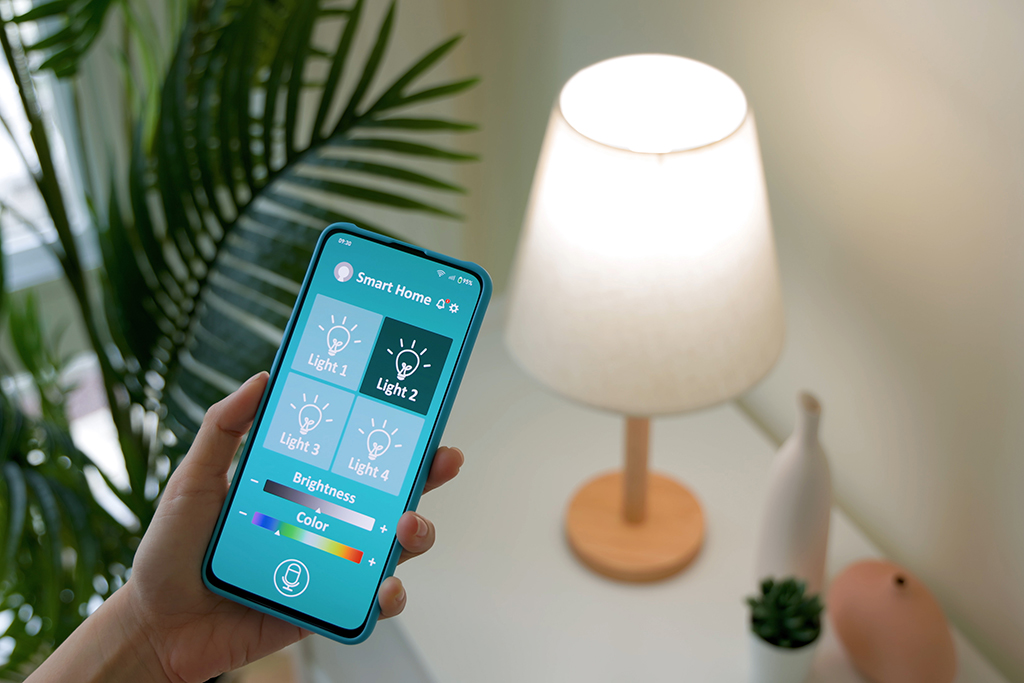
An empty home can be attractive to thieves, making it important to take steps to deter them. First and foremost, while you may be tempted to share every moment of your travels online with family and friends, try not to post about them on social media until after your trip—otherwise, you’ll just be sending a blatant “I’m not home” beacon. Another sign you’re away is your house being dark at all hours; you can use smart technology to turn your lights on and off remotely via a smartphone app to create the illusion someone’s there.
As for your exterior, a snow-covered driveway and walkway can make it clear that no one has come and gone for a while, so you may want to ask a trusted contractor to clear them after each storm. Similarly, avoid having mail pile up on your porch by asking a friend or neighbor to collect it for you or putting in a request at USPS.com to have it forwarded or held. The less stagnant your property appears, the less likely it is to be targeted.

Installing a DIY-friendly security system like one from SimpliSafe or Vivint can provide an extra layer of protection; each typically comes with sensors, cameras, and other features that you can monitor via an app on your smartphone no matter where you’re at. You’ll also have the option of adding 24/7 professional monitoring, giving you greater peace of mind for when you can’t check on your home yourself. You can even reach out to your local police department for assistance in protecting your home. Many offer a form you can fill out with your contact information to request more patrol in your neighborhood while you’re away, enabling them to reach you if there are any issues.
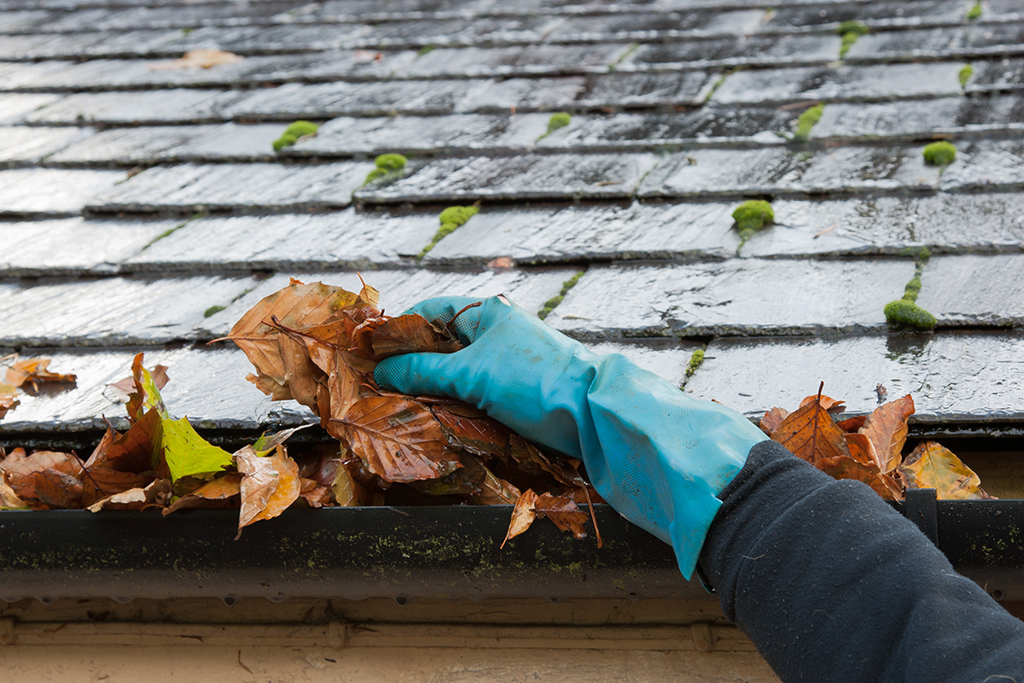
Water leaks of any kind can lead to damage and costly repairs, especially if they aren’t caught for weeks. Set your thermostat to at least 55 degrees to prevent your home’s pipes from freezing and bursting, and turn off your refrigerator’s ice maker so it will be less likely to leak. Better yet, you could shut off your home’s main water supply if it’s not needed for your heating system; if you do, make sure to drain your pipes and turn off and drain your water heater as well.
Additionally, have your gutters cleaned before departing to promote proper drainage and prevent melted snow and ice from making their way into your home. Consider hiring a winterization professional to inspect your property both inside and out a few weeks before you leave so you’ll have time to make any necessary updates.
To help ensure that everything remains in order while you’re gone, have a trusted friend or family member visit your property regularly. They may be able to catch and alert you to an issue, such as your furnace suddenly ceasing to work, before it causes more problems. You could also hire a home-watch service for this purpose.
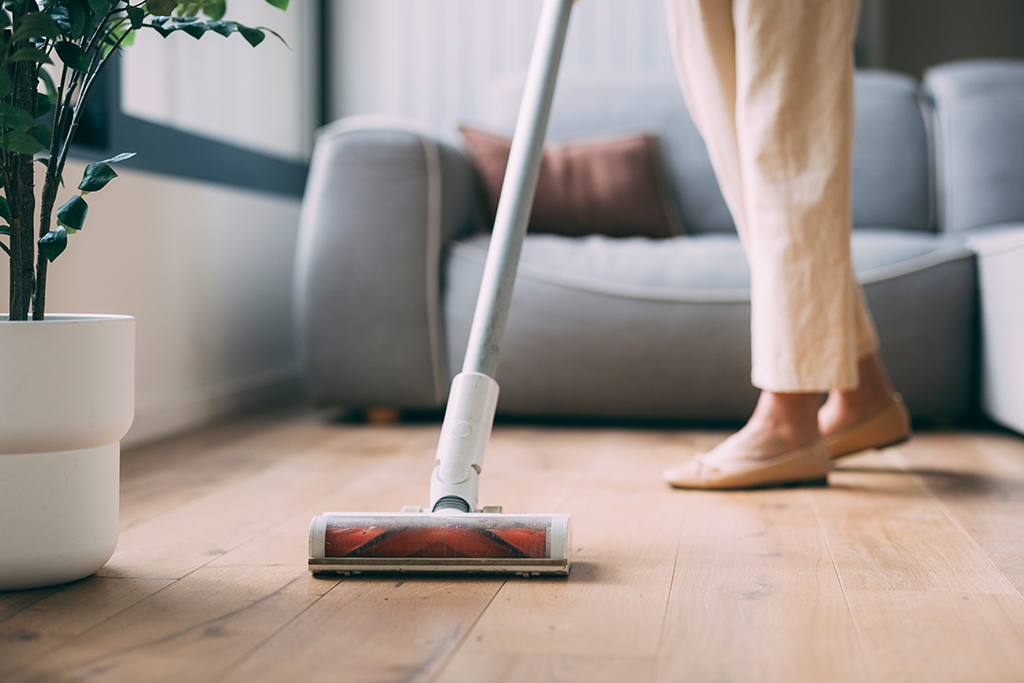
The last thing anyone wants to face after spending time away is a home in disarray. So as part of your trip prep, empty and scrub your refrigerator, wash dirty dishes, dust and vacuum each room, and take out the trash. Also consider thoroughly defrosting your fridge and then keeping it unplugged with its door propped open to prevent mold; you may want to leave the doors to your dishwasher and washing machine ajar for the same reason. It may also be worth having your home inspected by a pest-control professional, who could identify and remediate an infestation or take measures to prevent one from occurring over the next few months.

If all else fails, having adequate homeowners insurance can help protect you financially in the event there’s damage or theft while you’re away. Many policies have a vacancy clause that will exclude coverage when a home is unoccupied for at least a month at a time, so contact your insurer well before your departure to make any needed adjustments. Depending on your home’s location, you may also want to purchase supplemental water backup coverage as a precaution against frozen and burst pipes.
By following these simple steps, you can better ensure a stress-free stay in your second home knowing your northern haven is protected. Go and enjoy the sunshine!






